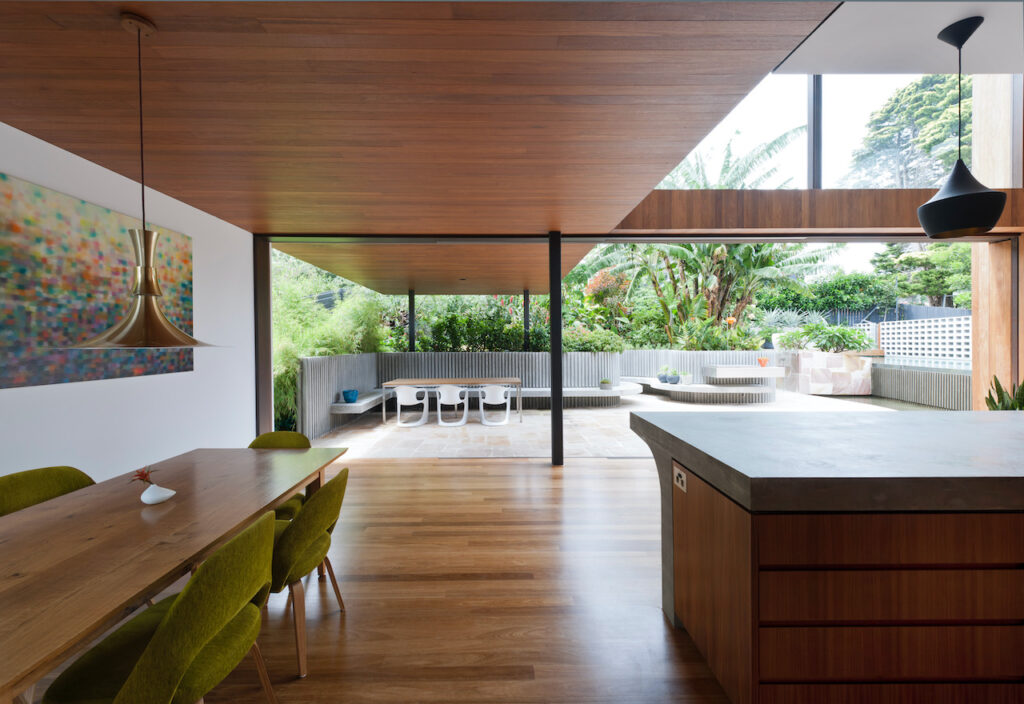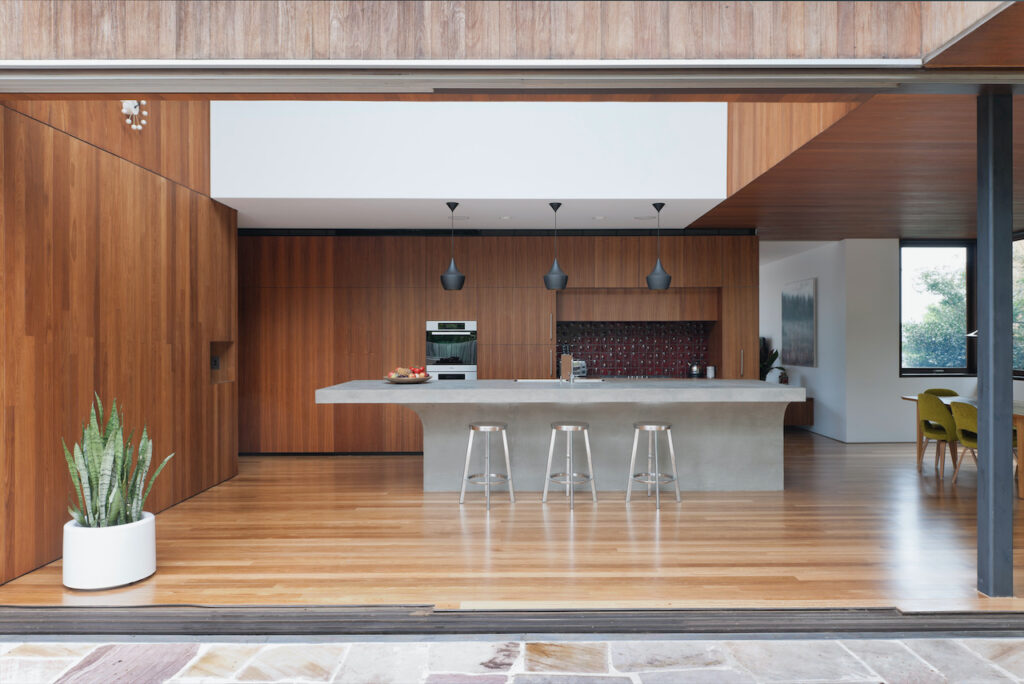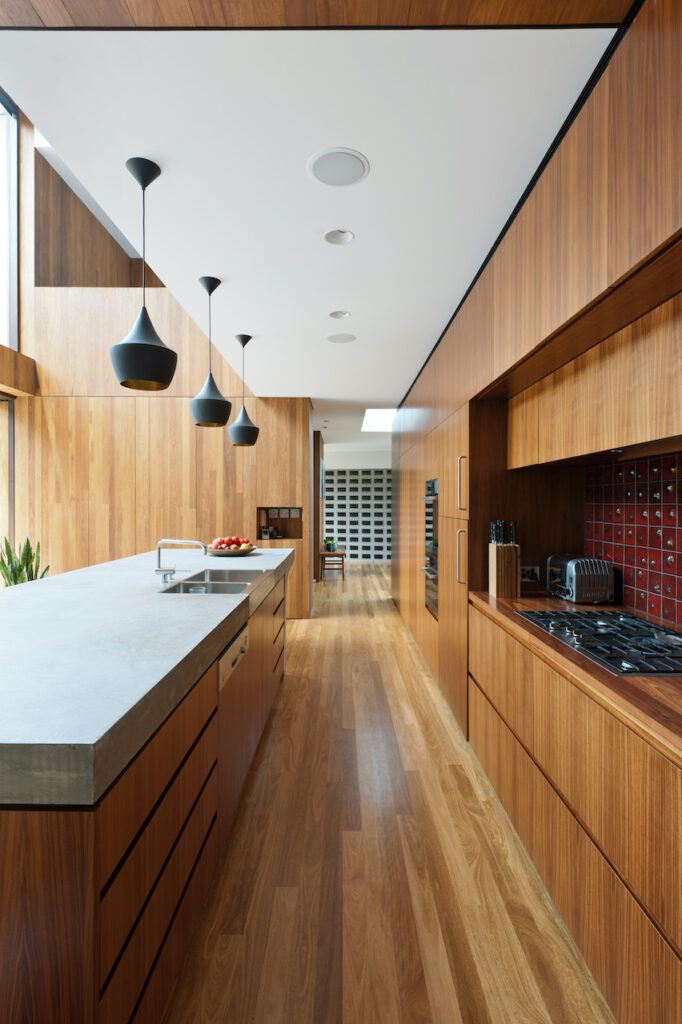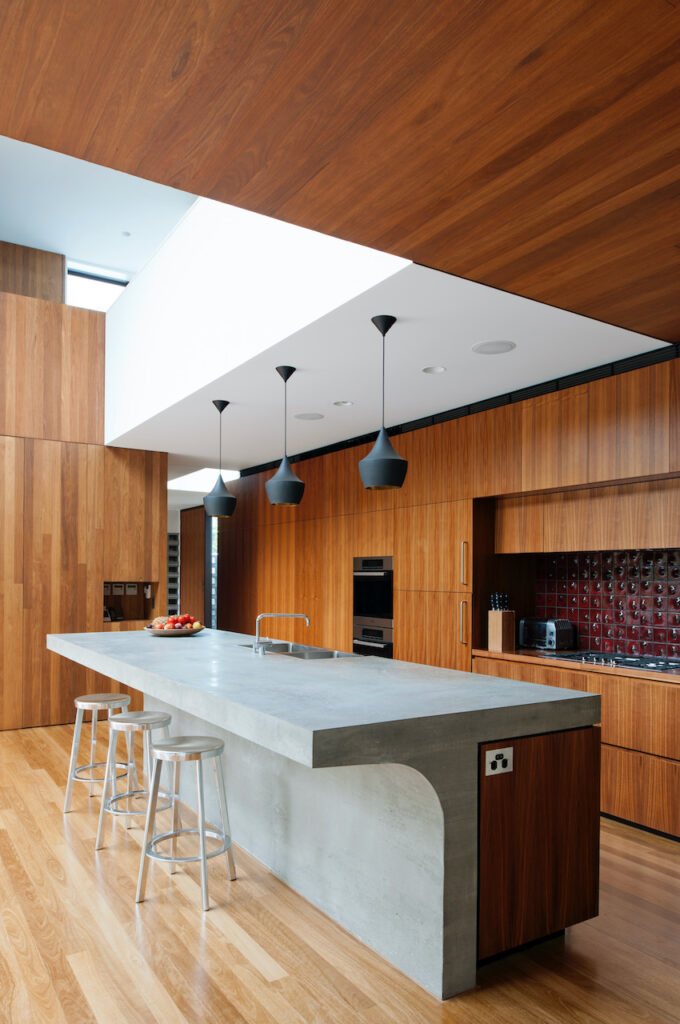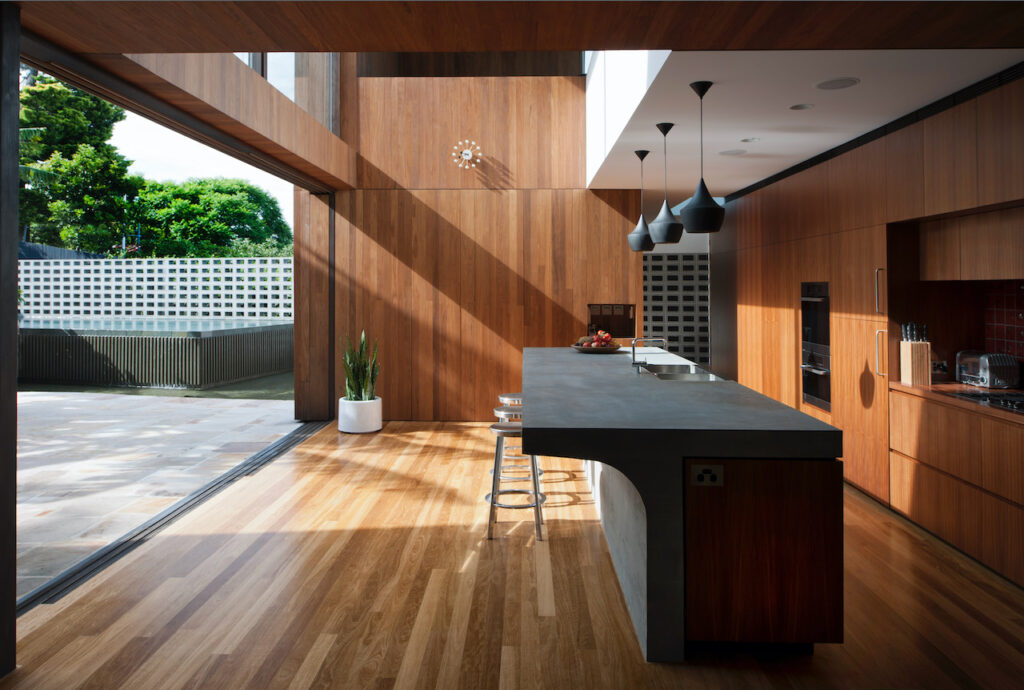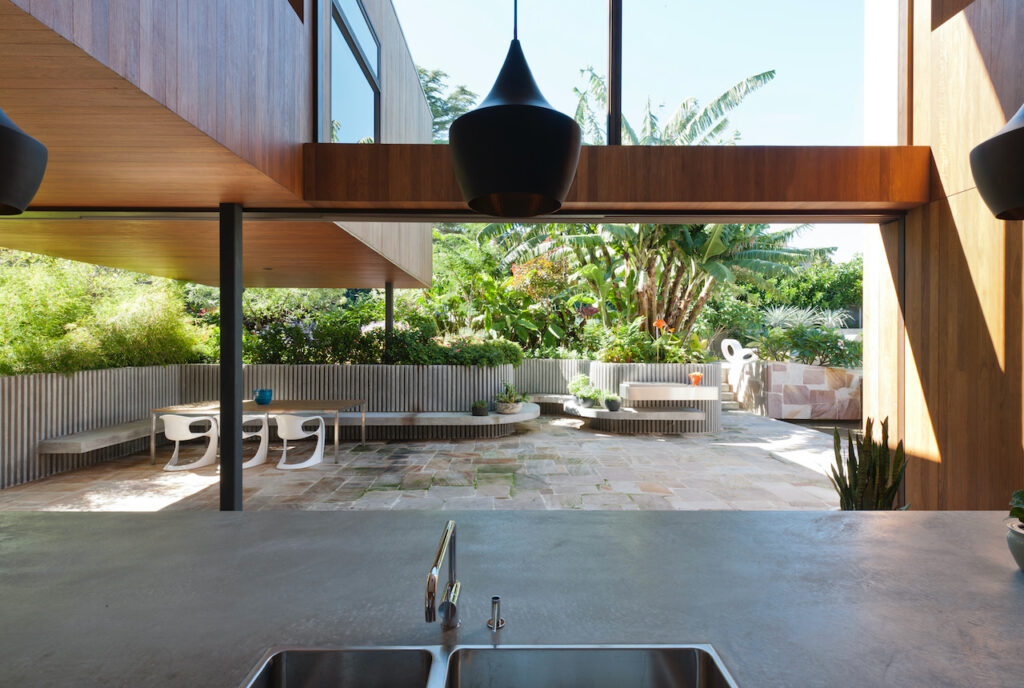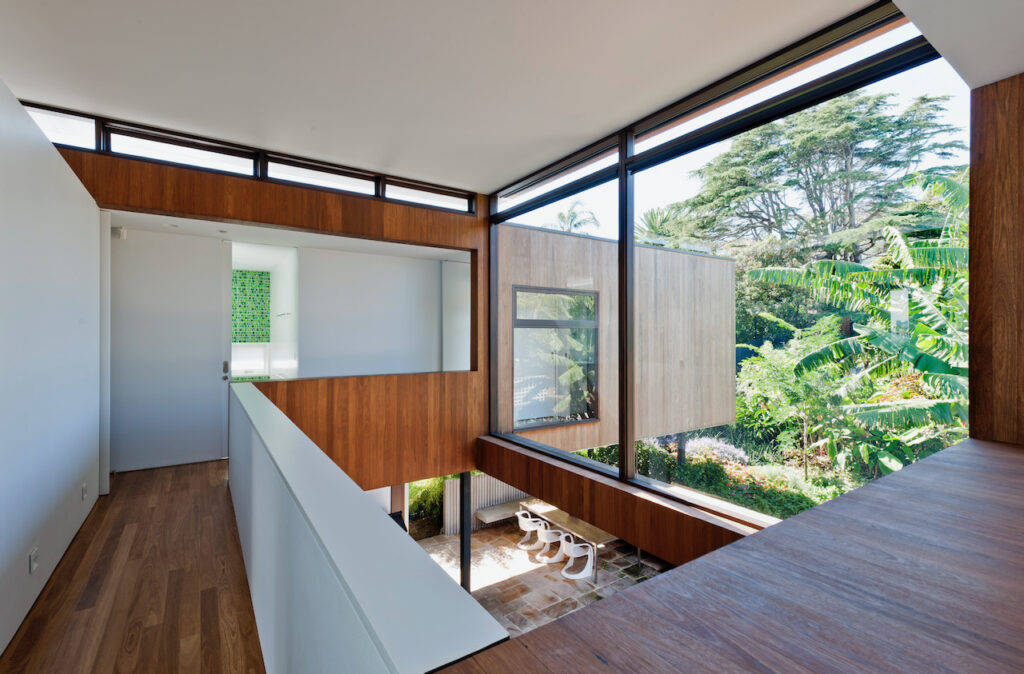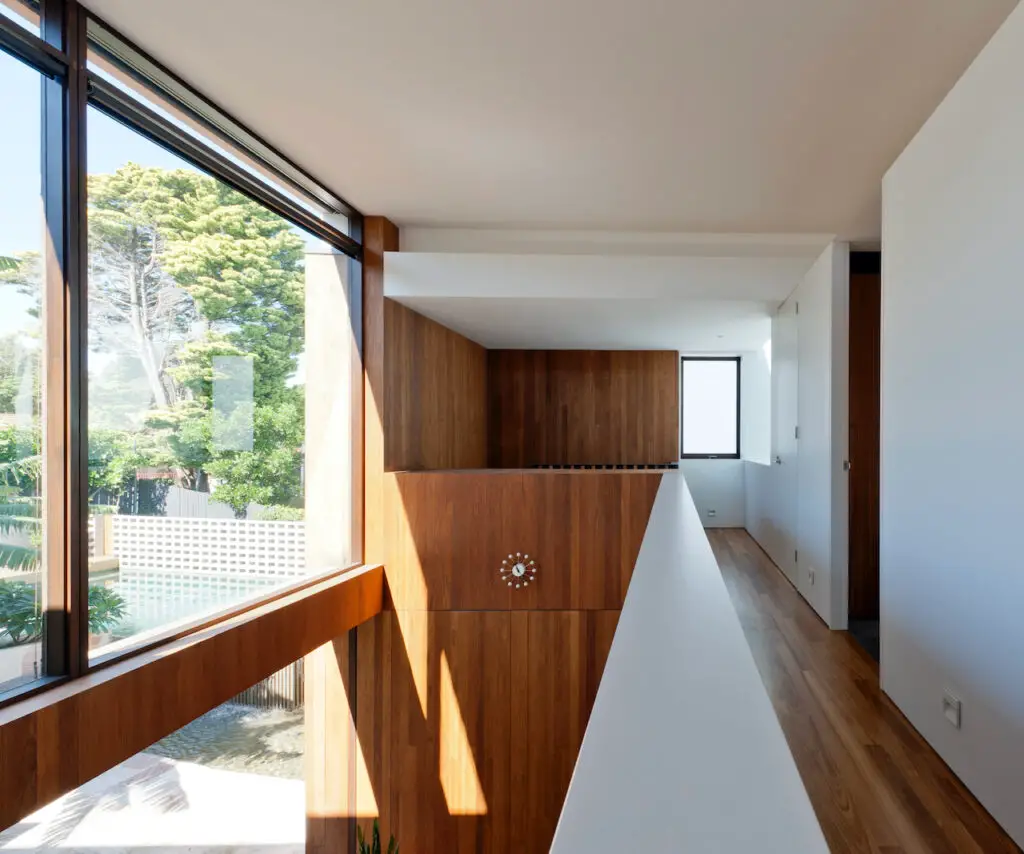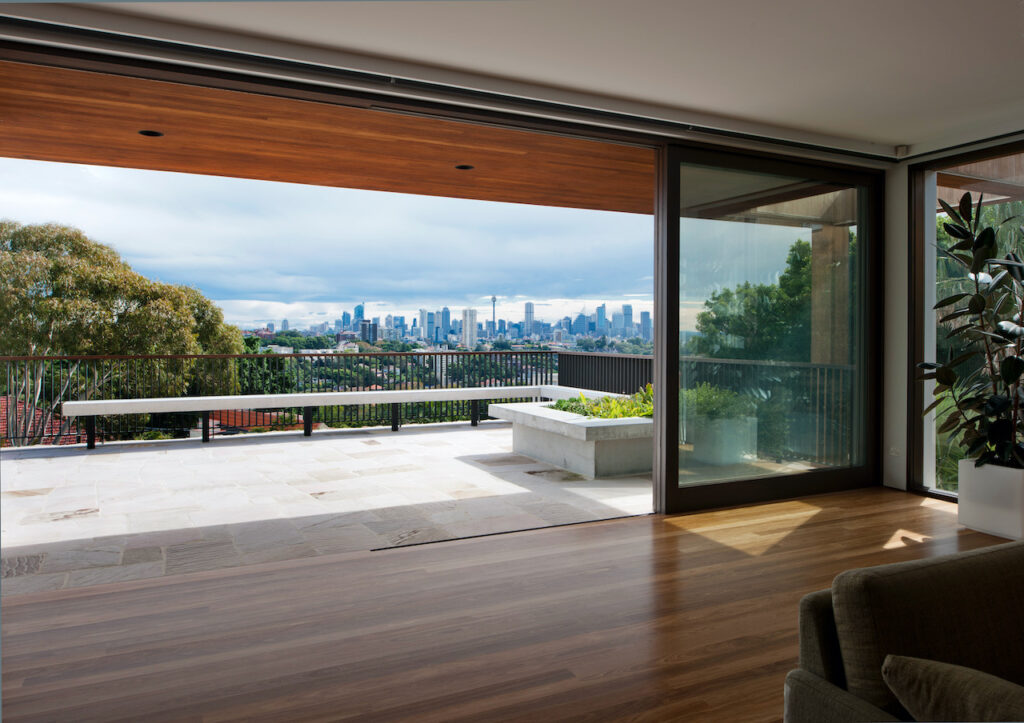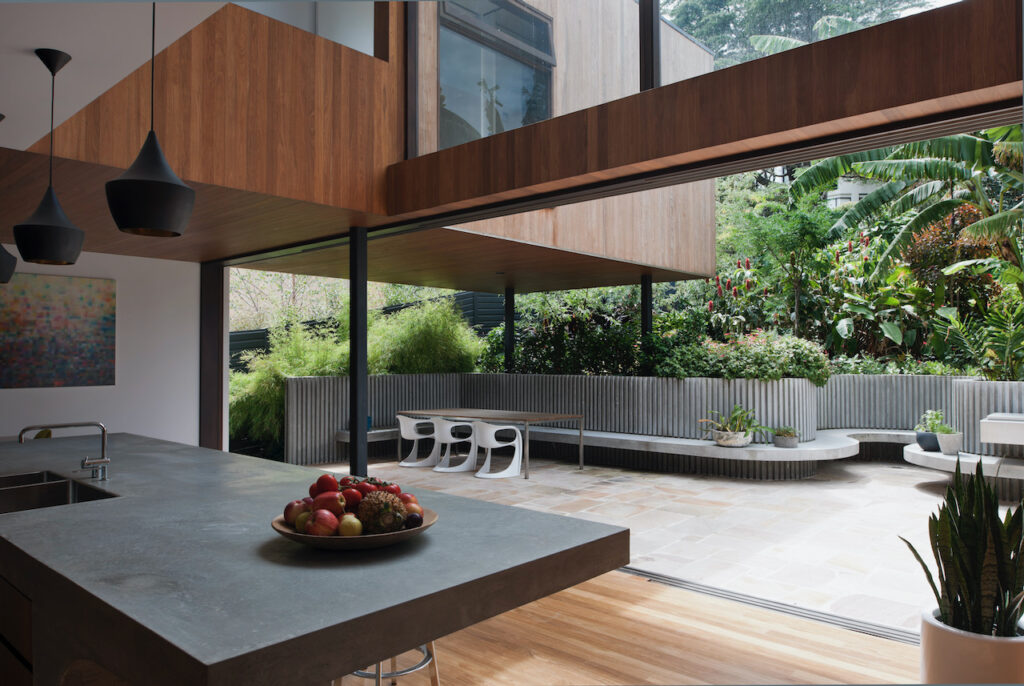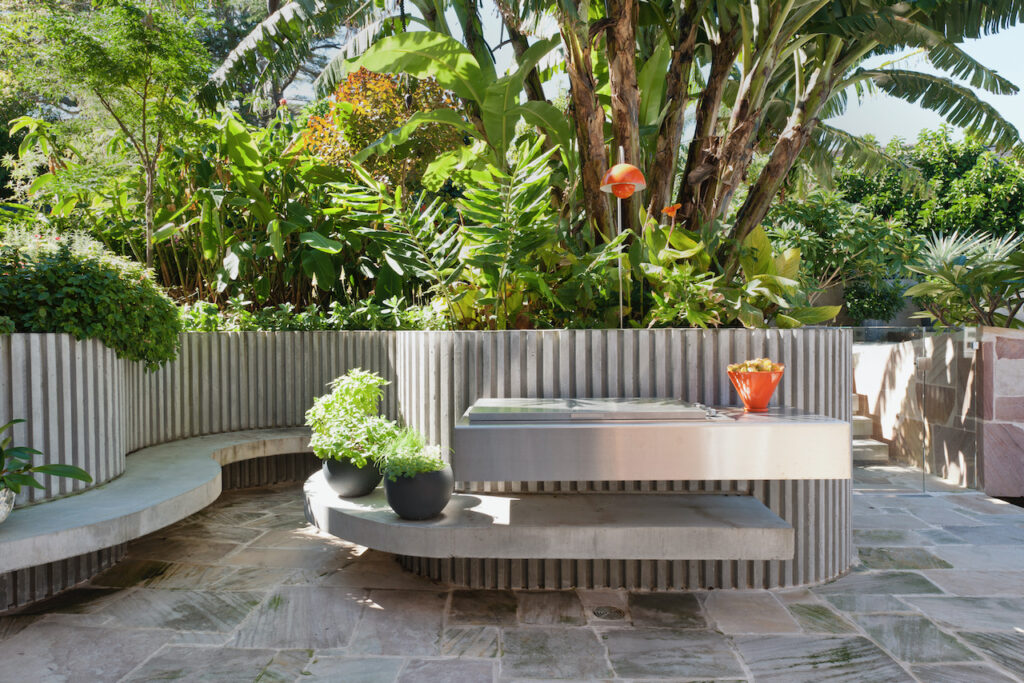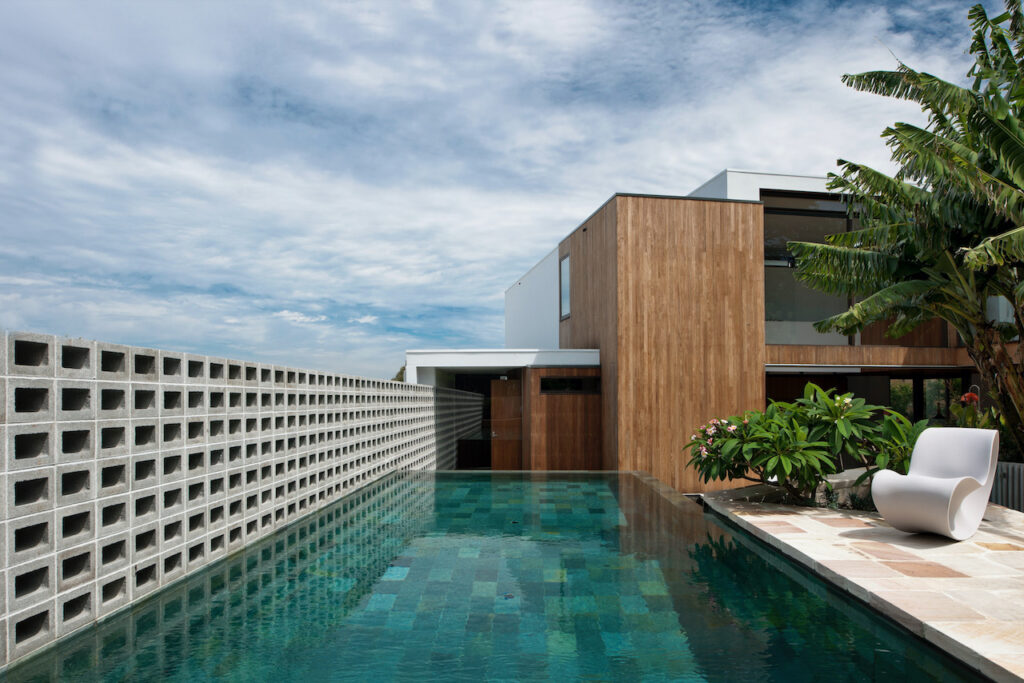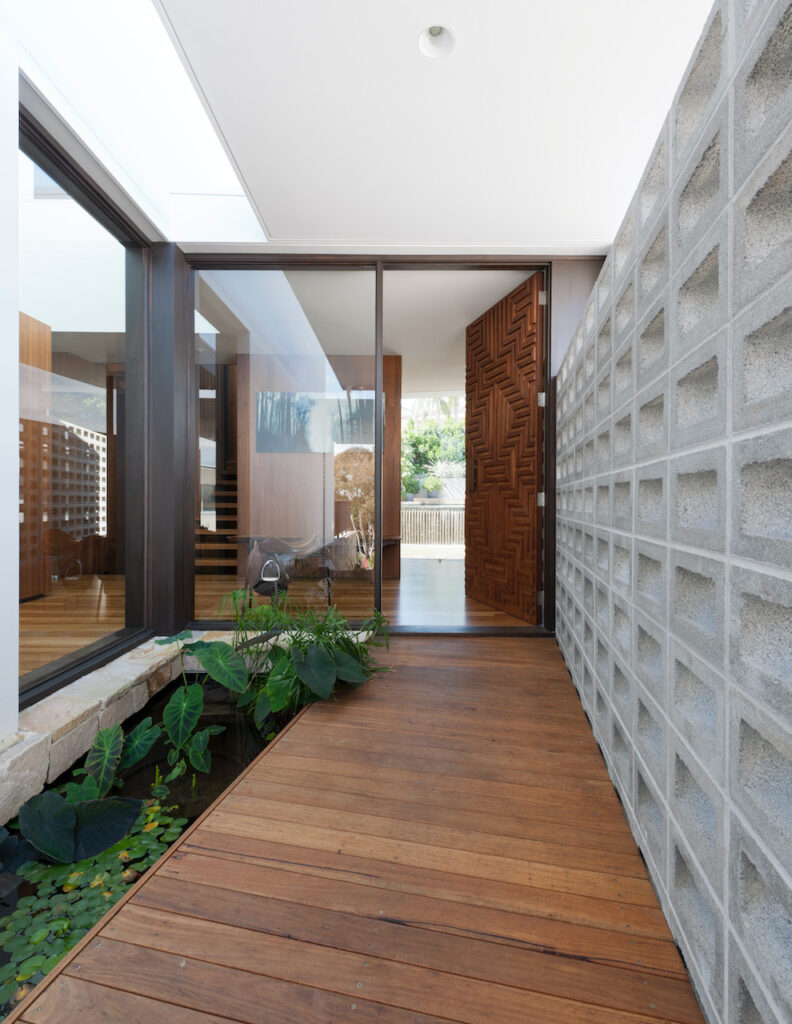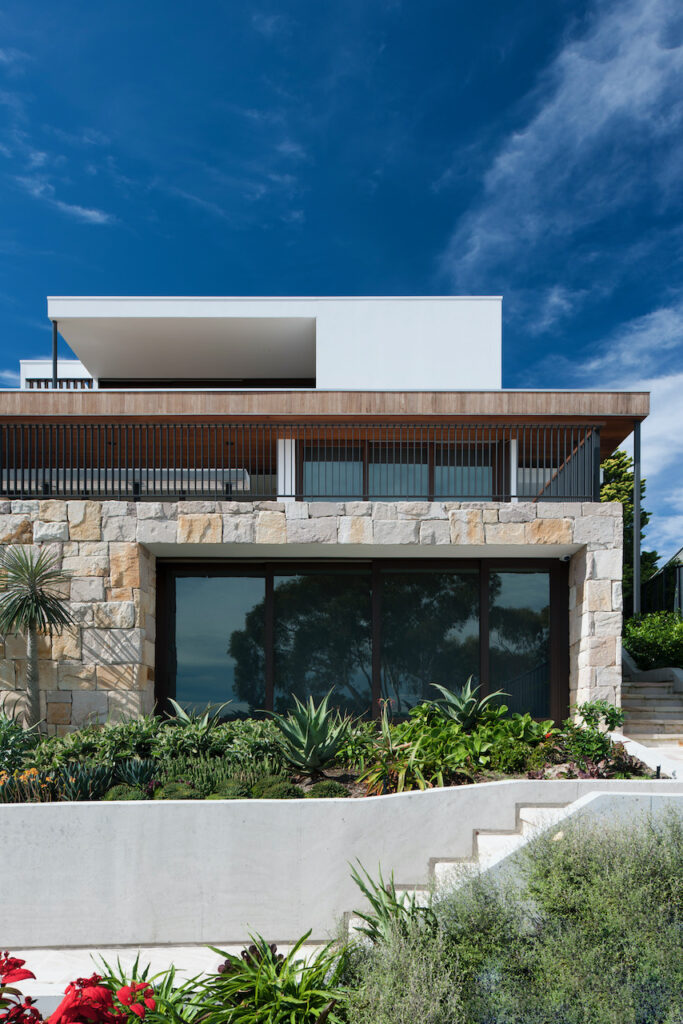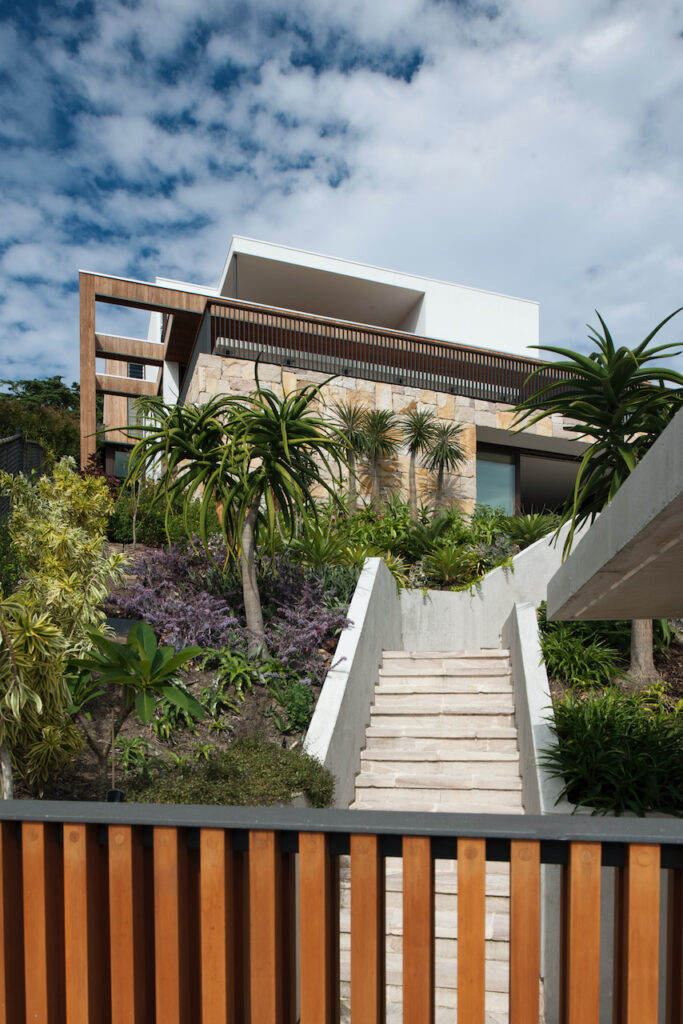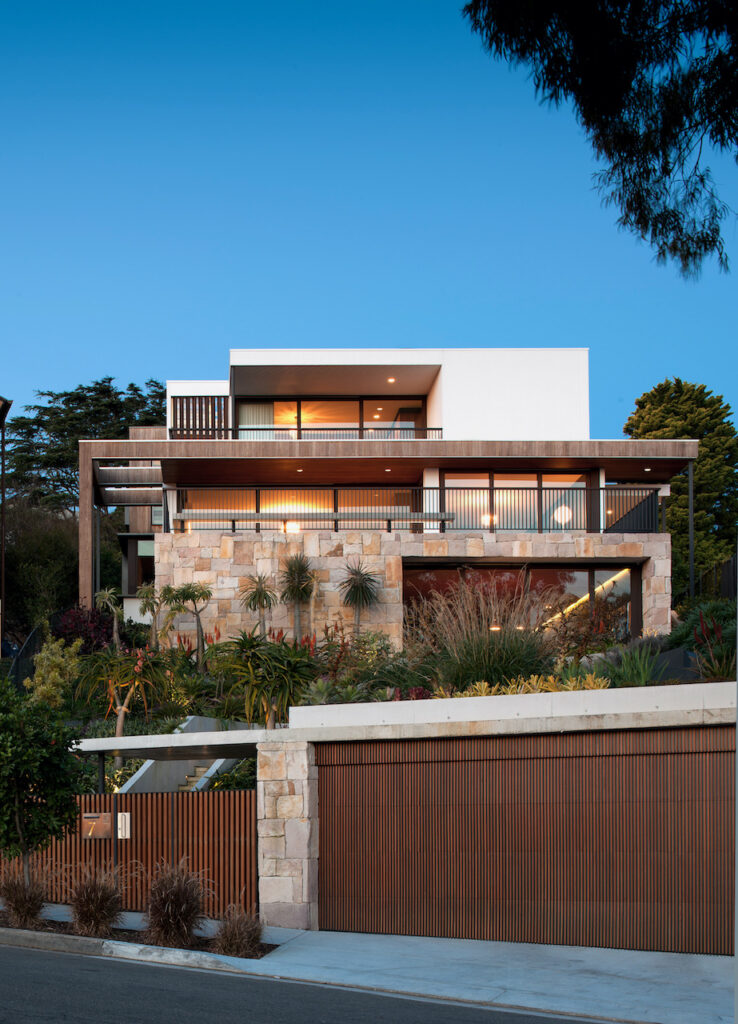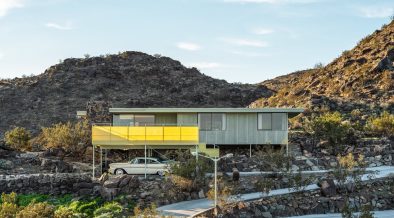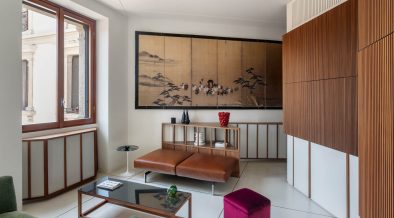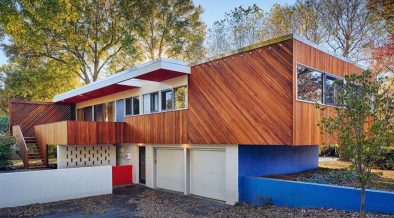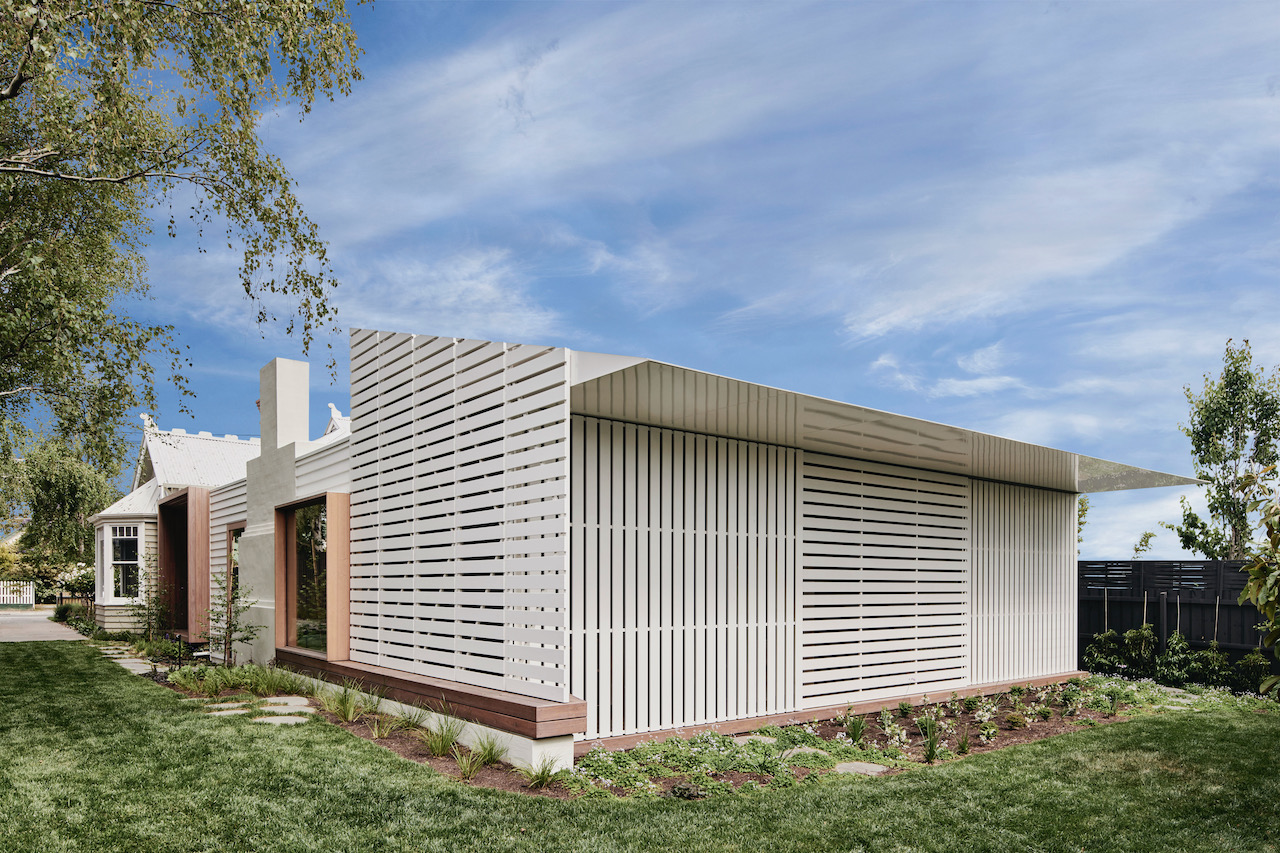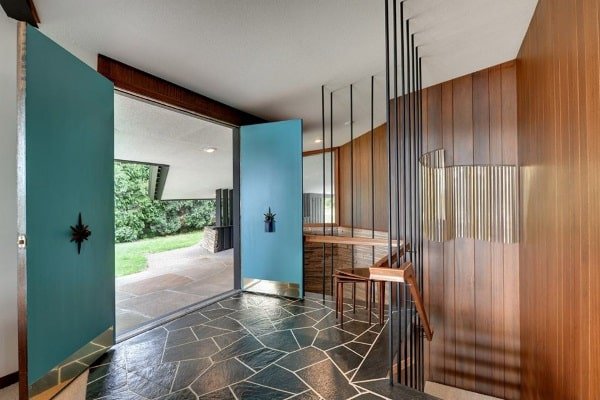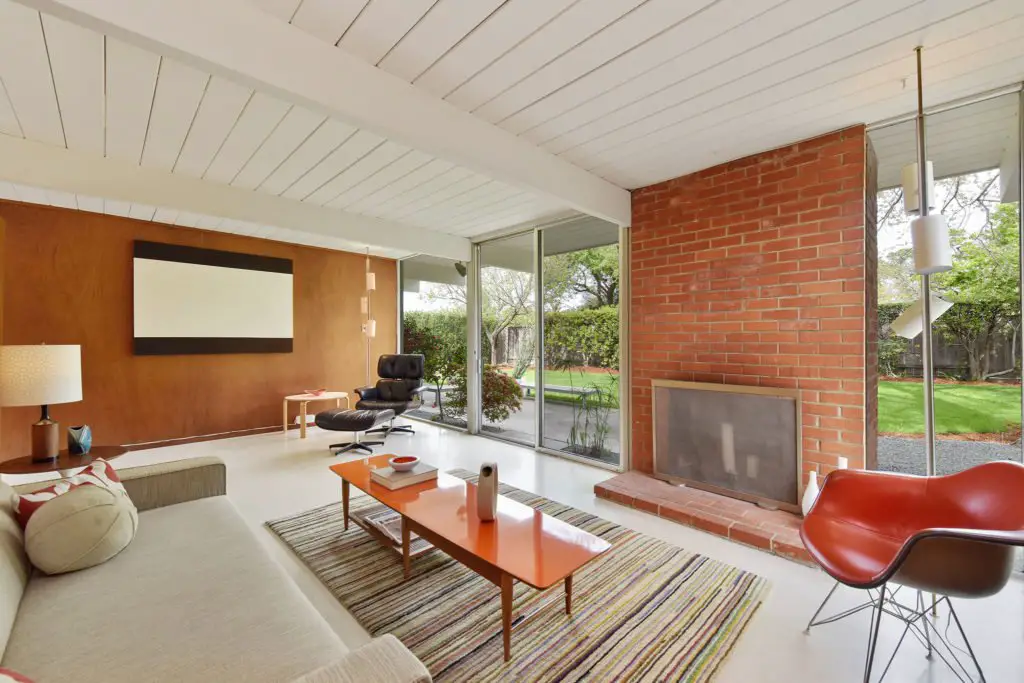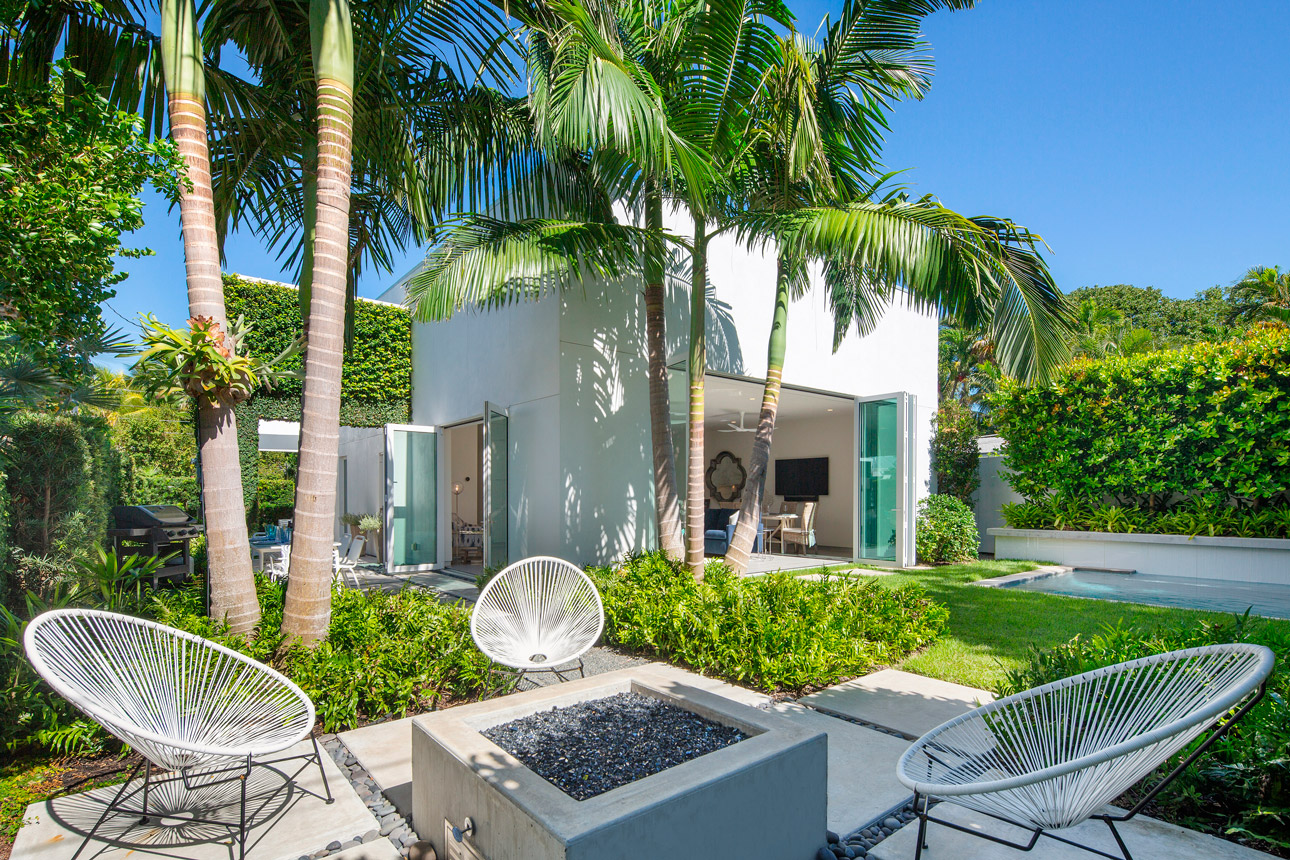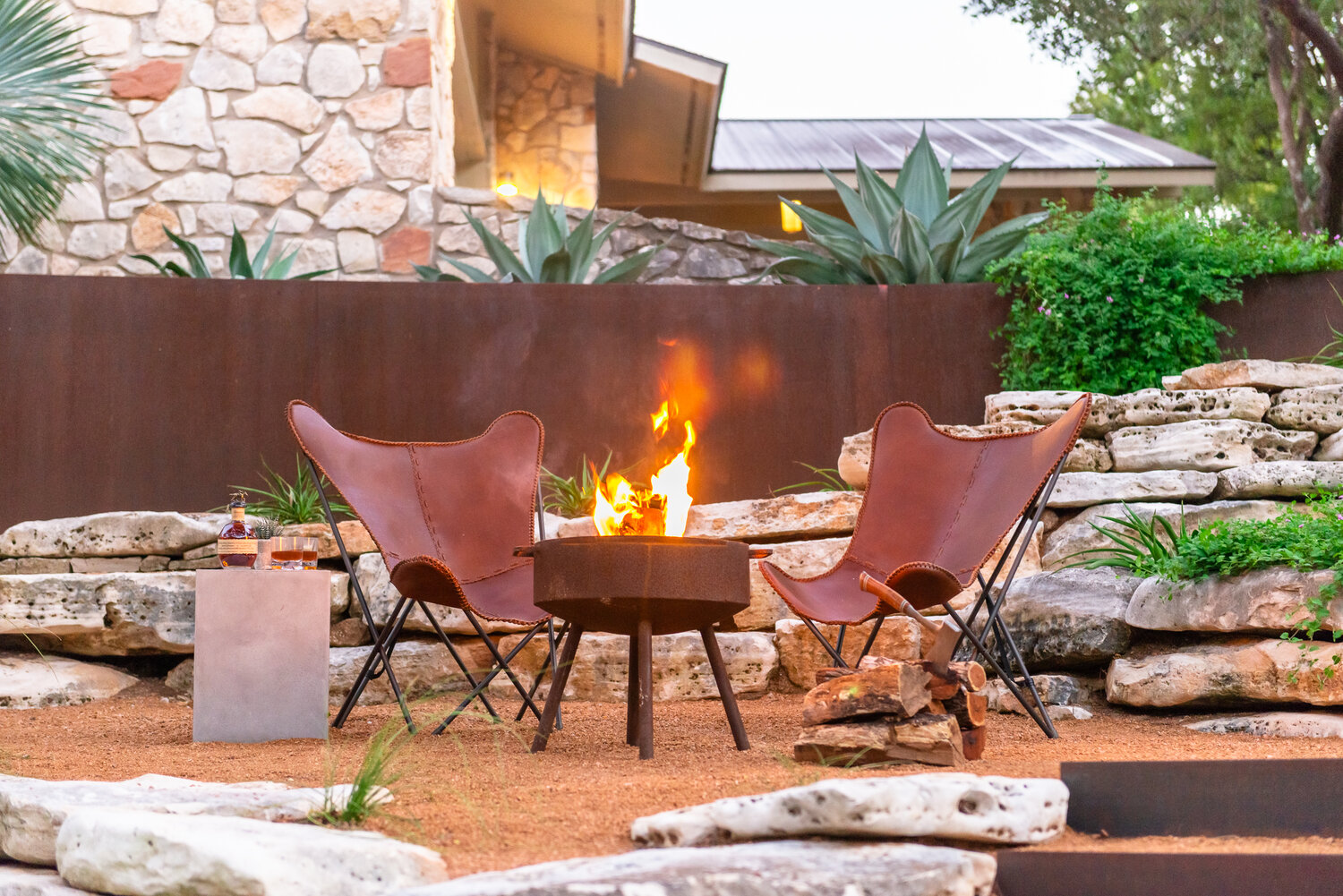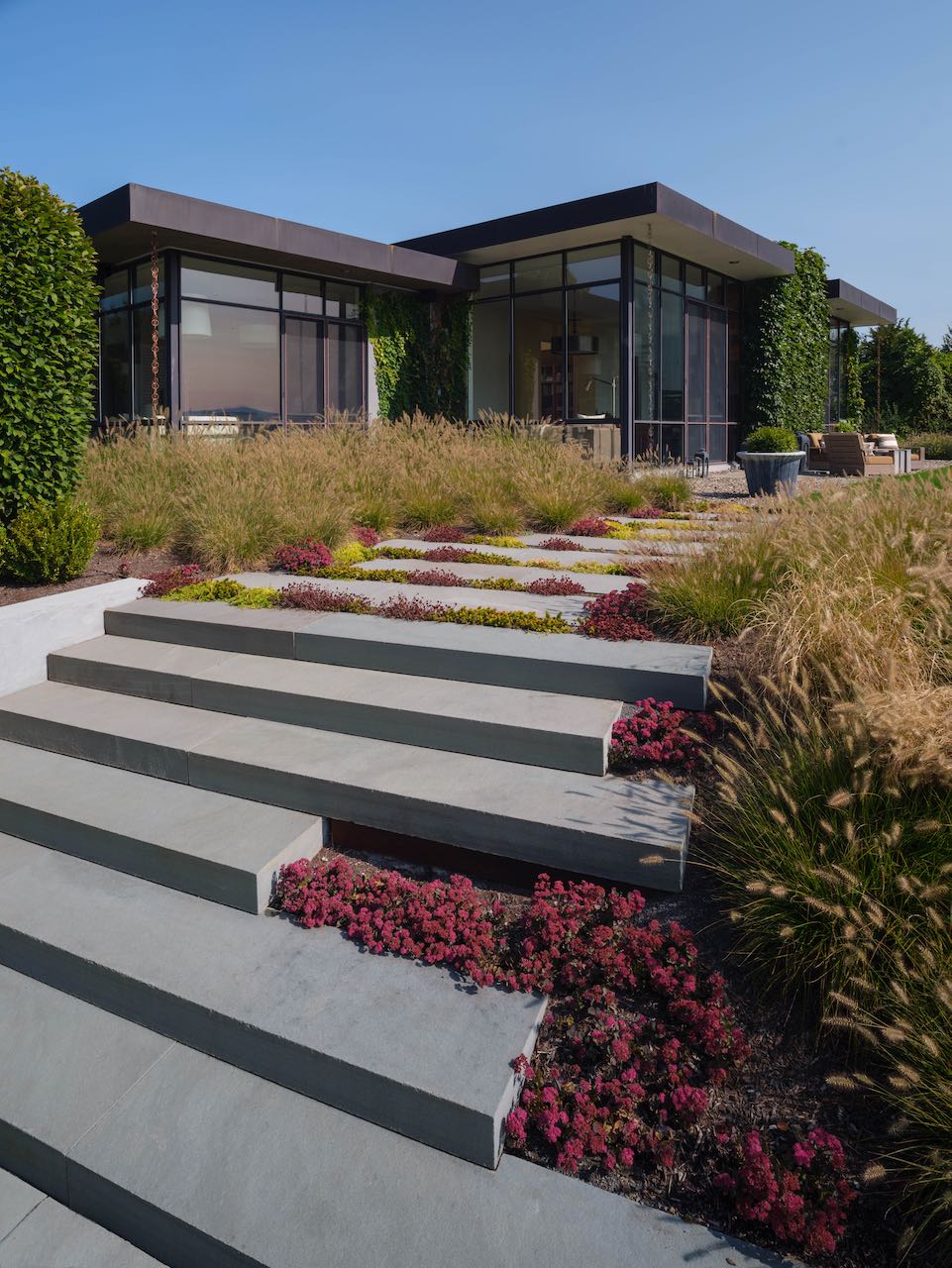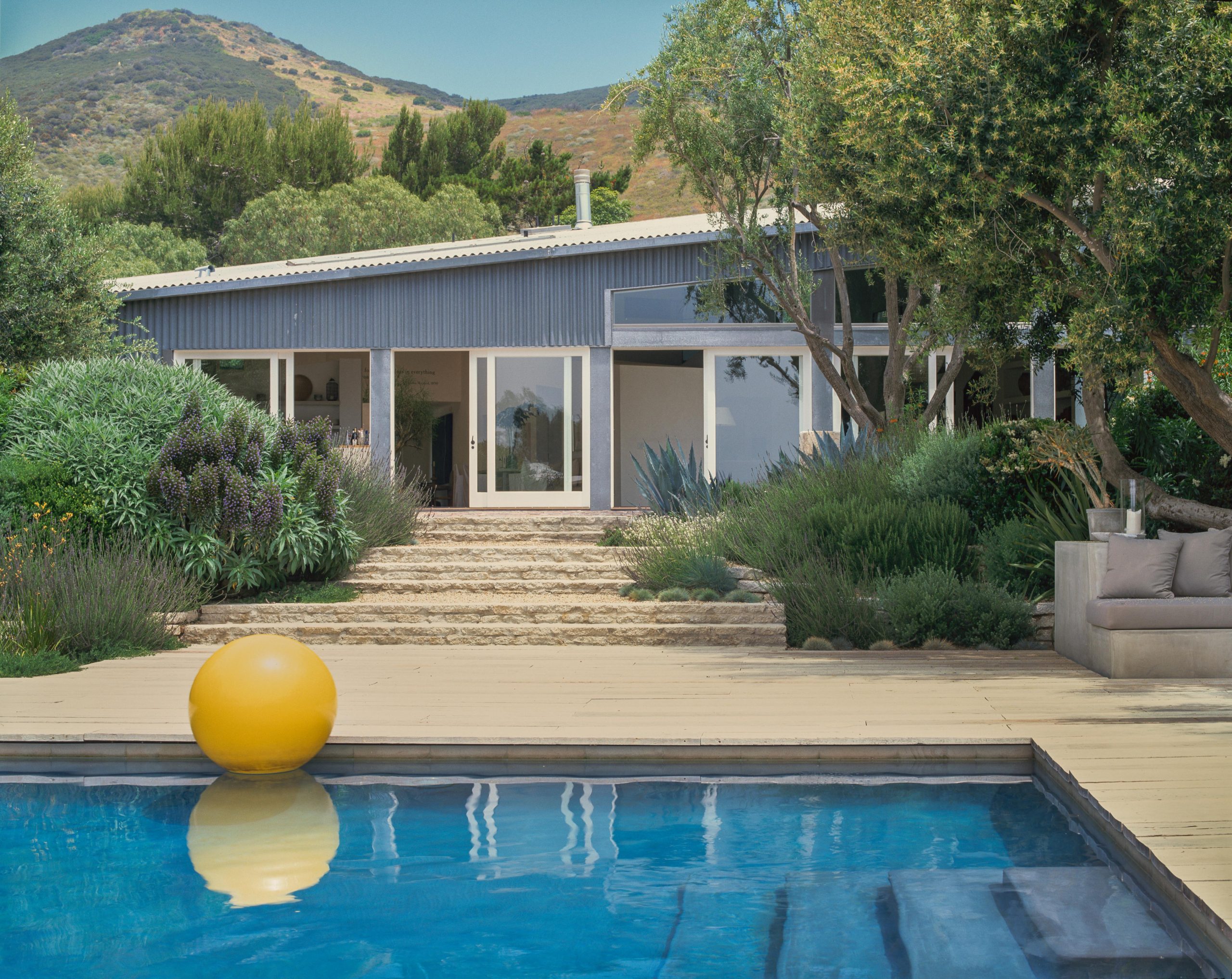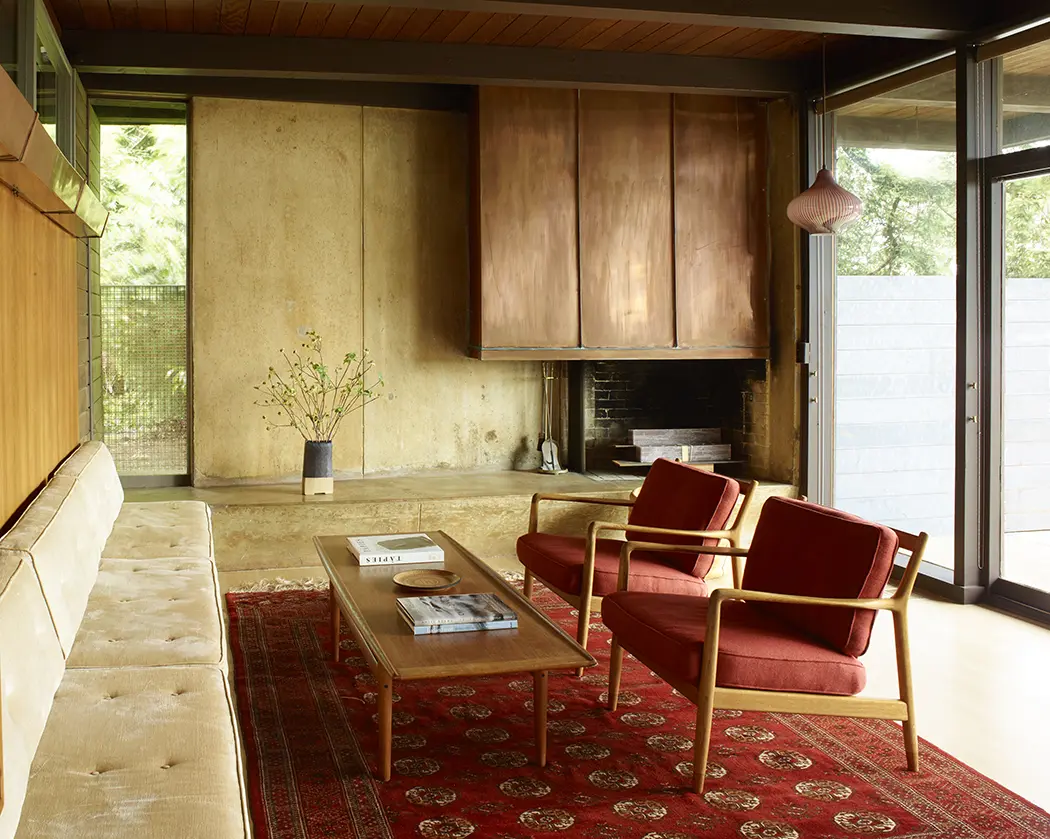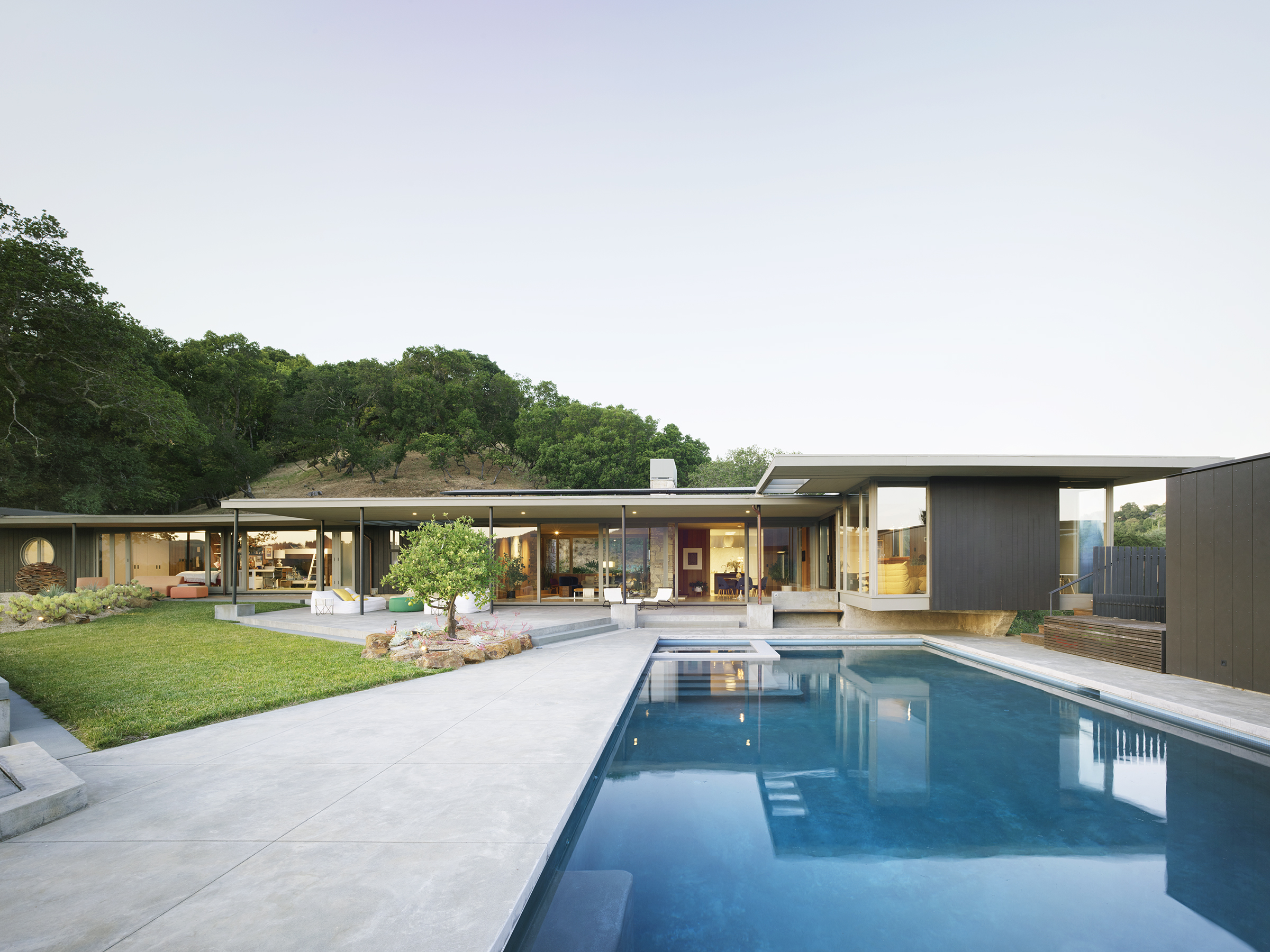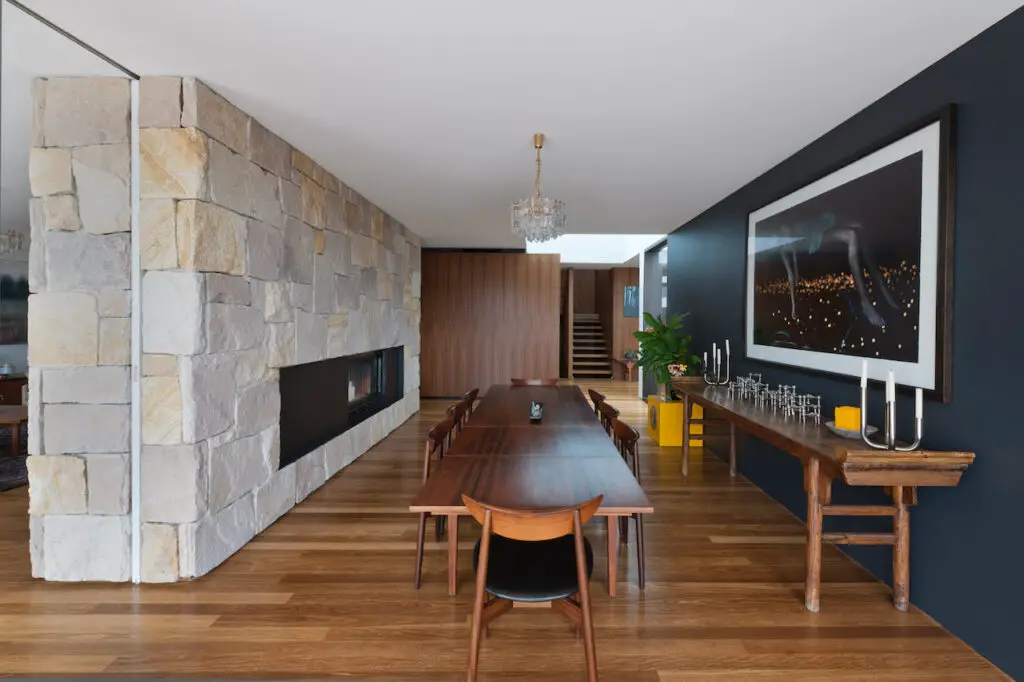
Text by Annie Price
The design for the Flipped House in Sydney’s eastern suburbs, was a strong collaboration between Marsh Cashman Koolloos Architects and the owners, both sharing an enthusiasm for the original Henry Rossler House that sat on the site and its inherent 60’s aesthetic.
The owner’s late father was an architect interested in midcentury modernism and natural materials.
In principle, they set out to replace the original modernist house (that just didn’t work for the owners) with a contemporary version of itself, yet with a major portion of the massing flipped onto the roof.
This generated more space to the rear yard which enabled the architects to create a more spacious and luscious rear garden, an important requirement within the brief for the growing and active family of four who would call it home.
The house is designed over three levels. During the 18 months of construction, a new lower ground floor level was added and surrounded with impressive, thick sandstone walls forming a strong plinth connecting to the earth.
The main living level [the timber level] sits above this plinth, and is highly fenestrated and therefore comparatively open, responding to its functional nature.
The top level, in lightweight cladding with render and paint, is deliberately more solid, again concealing the more private nature of the bedrooms it contains.
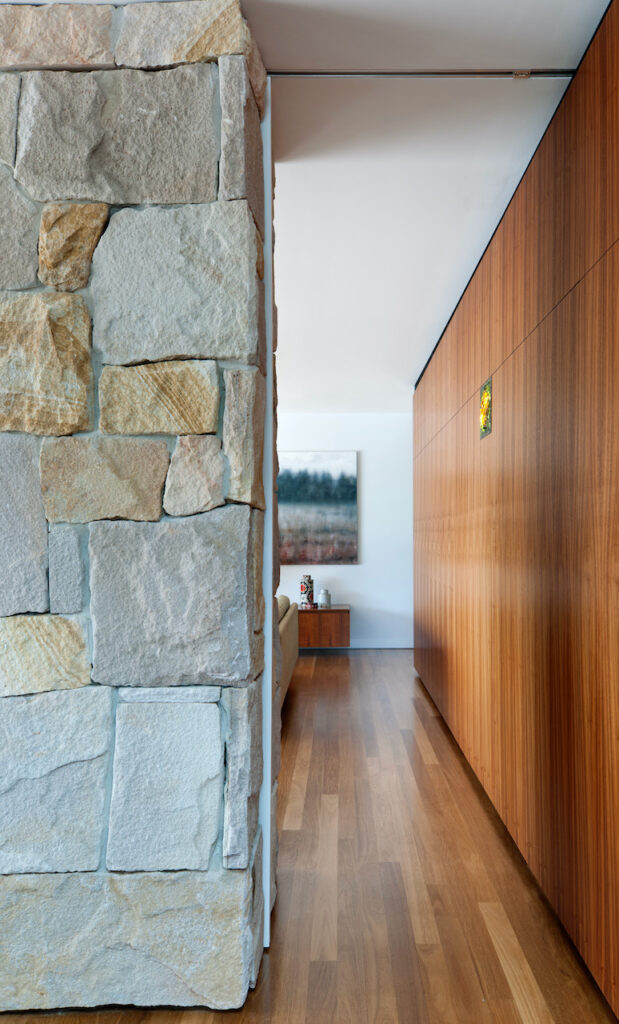
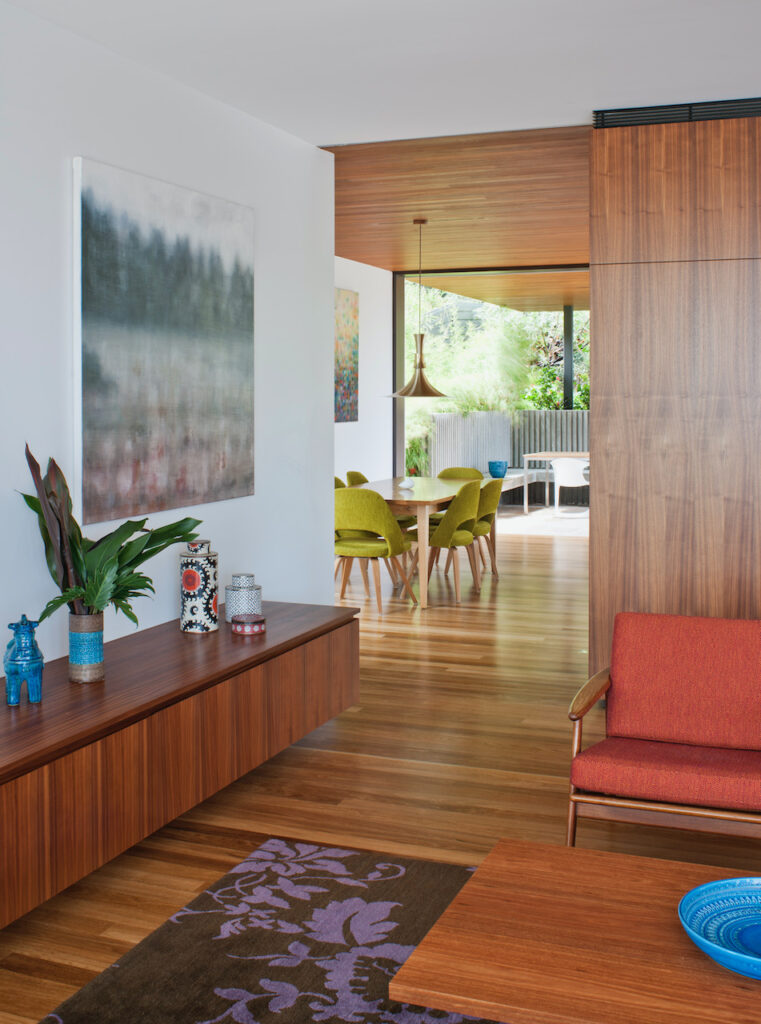
Whilst the views of the Sydney Central Business District to the west are spectacular, the Flipped House design is considerably restrained in the places this view can be accessed.
Quite deliberately, a new view to the luscious, landscaped gardens to the east was generated and again controlled in measure to be embraced.
It’s the main living level that most strongly reflects the plan of the original Henry Rossler home. In this respect, the ability to install a sense of ambiguity to the design was implemented.
The rear garden ‘rooms’ + hard-landscaping was inspired by the pure geometry of Oscar Niemeyer. The bottom of the pool is a slate mosaic and the wall bordering the outer edge is constructed from concrete blocks typically used for structural walls, not decorative features.
The decision to use them was influenced by the existing rear boundary fence, also built of concrete block, albeit a more ornate style. This new concrete block wall references the past and allows for privacy as well as cross ventilation.
Concrete blocks line an exterior plank-like walkway. A chain hanging down acts like a down-pipe to take water from the entry roof to the pond below. This is yet another tribute to the era of the original house.
The kitchen island looks as though it were carved from a single piece of stone but is actually made of steel trowel finished concrete. The carved front door is a replica of one the owner’s father designed for their family home, so it held sentimental value.
It’s these inspired, clever design choices, the finishes chosen for this home and the constraints of the site that led to opportunities, that have resulted in a triumphant build.
